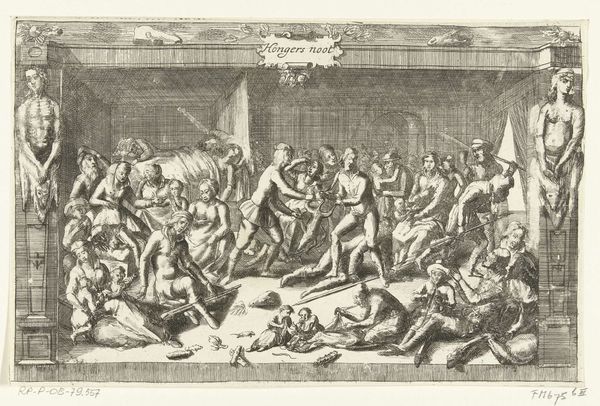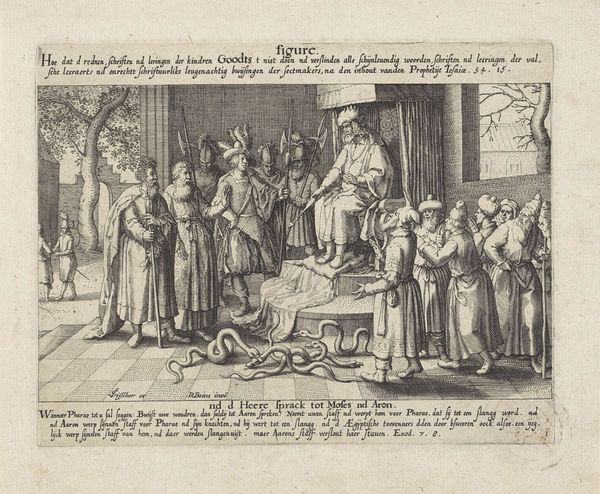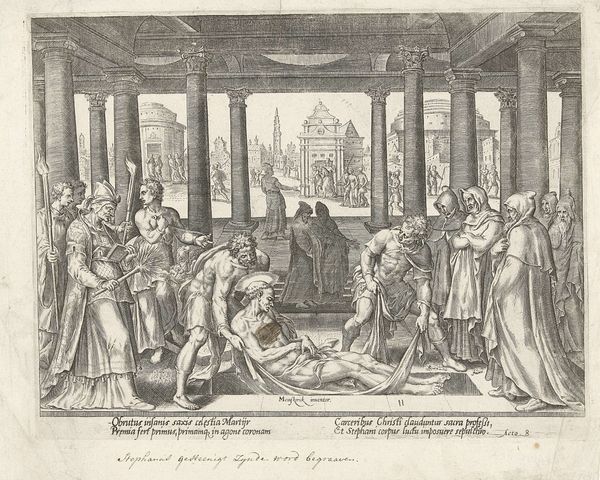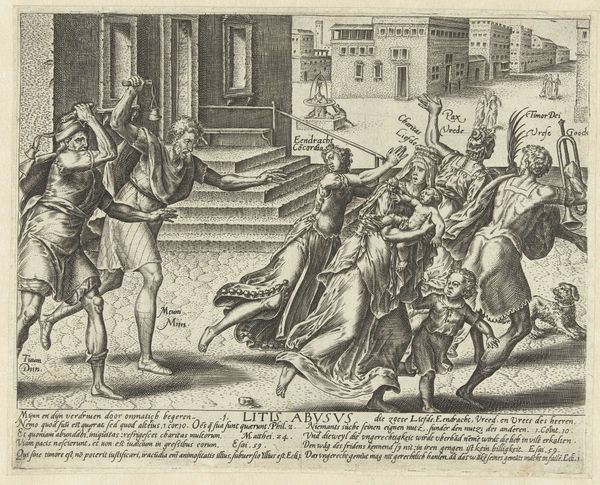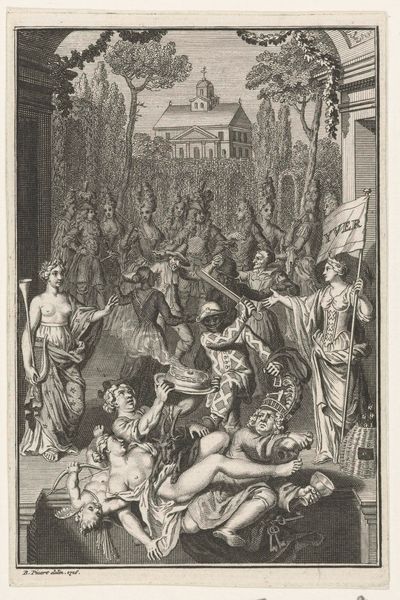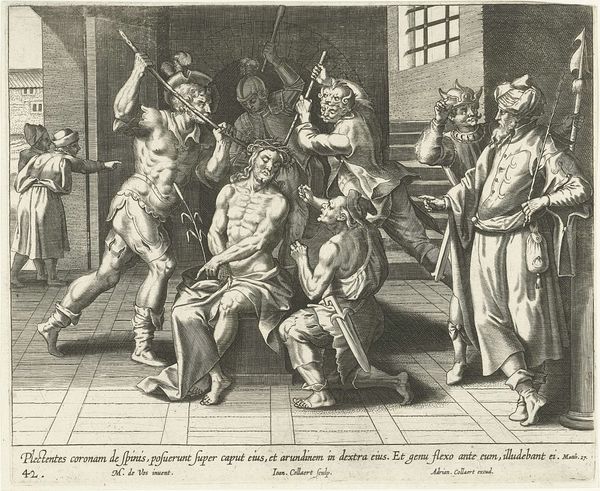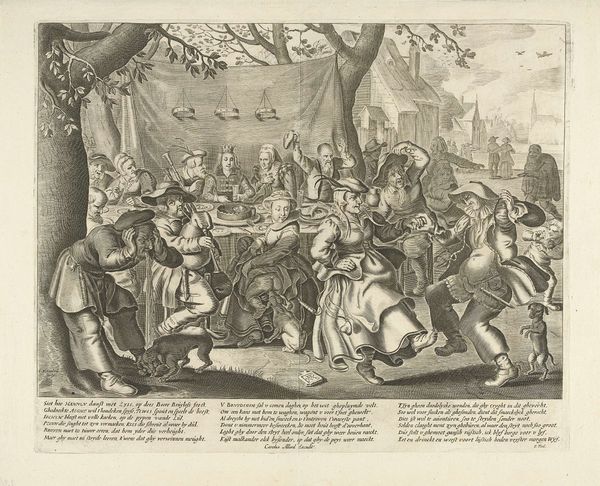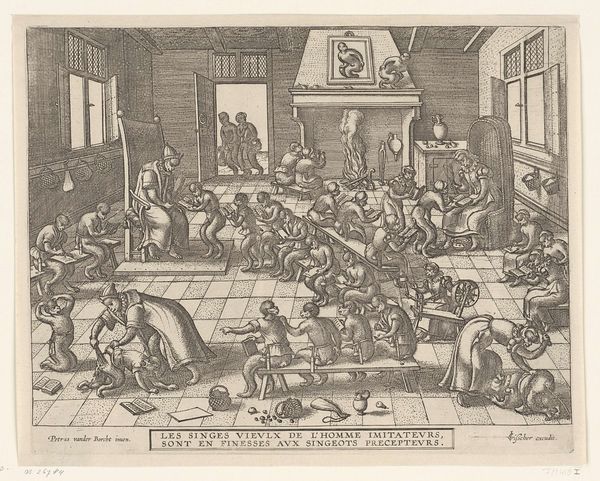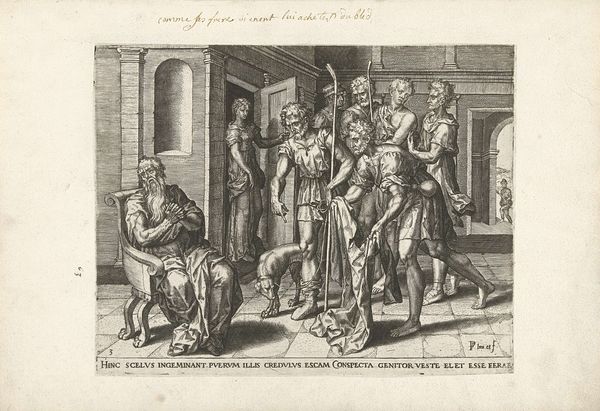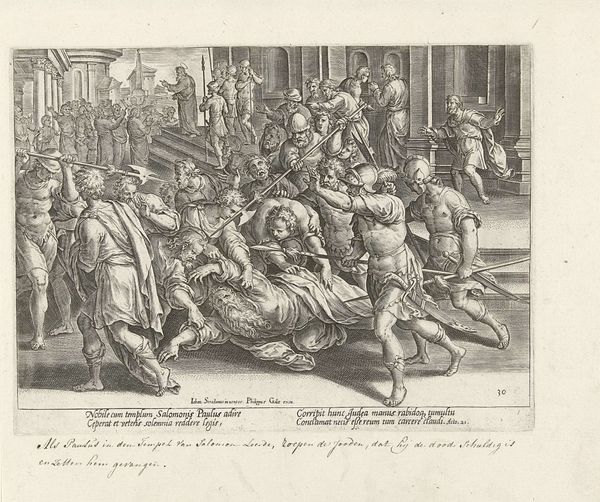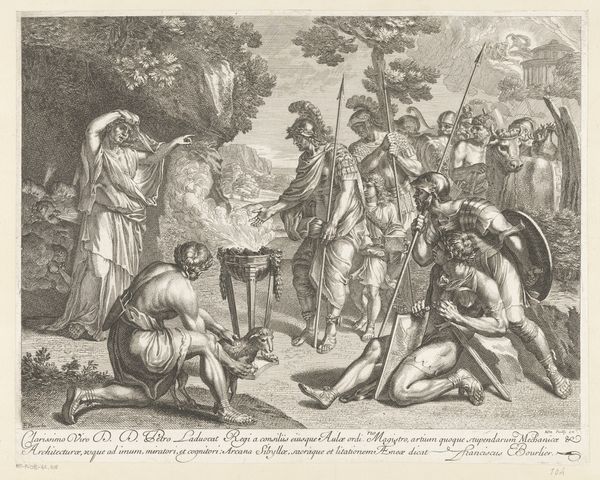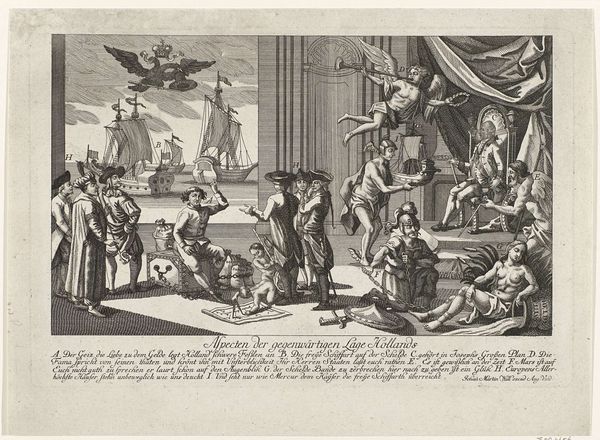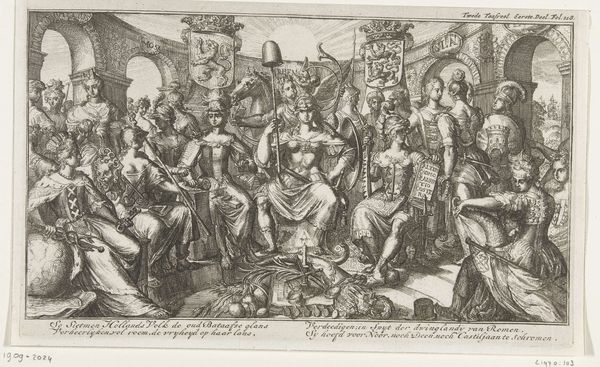
print, engraving
#
medieval
#
dutch-golden-age
# print
#
old engraving style
#
genre-painting
#
history-painting
#
engraving
Dimensions: height 98 mm, width 140 mm
Copyright: Rijks Museum: Open Domain
Curator: The stark symbolism immediately grabs me. This feels like a very pointed commentary on the price of knowledge, doesn't it? Editor: Yes, there is certainly a severity here. And what we are looking at is an engraving, made in 1608 by Jacob van der Heyden. The work, entitled "Jonge mannen veranderen van dwazen in goede studenten", or "Young Men Transform from Fools to Good Students," visualizes the Dutch Golden Age's preoccupation with moral education and the relationship between folly and wisdom. Curator: Transform indeed! Look at these figures. We see fools in motley jester’s garb literally being axed while, just a bit further, what look to be much more soberly dressed figures observe a lecture. What a visually arresting and frankly violent depiction of what it takes to become "good." How do you interpret this central image? Is it literal or symbolic? Editor: The imagery is layered, to say the least. While the ax evokes a kind of painful or traumatic purging, perhaps of youthful foolishness or excess, we must see it within the context of the era's burgeoning humanism and the reformation’s emphasis on scripture. Are they losing their heads to scholarly pursuit? Are the socio-political and religious expectations of higher education literally a violent process for these young men? I would further argue, if you look at the instruments that have fallen near one of the figures in jester garb: this could point to the act of relinquishing musical pursuits and youthful entertainment as one turns to scholarship. Curator: That's fascinating. So the image becomes less about the absolute triumph of reason and more about the sacrifices—perhaps even the forced conformity—required to achieve scholarly respectability within societal structures. It’s hard not to view this through a contemporary lens, considering what we know about access to education and the inherent power structures. Does everyone truly have the opportunity to transform from "fool" to "student," or are those positions already predetermined based on social identity? The figures here all seem to be read as male, and the gaze of respectability excludes gender as a category of consideration. Editor: Yes, it reminds us that these concepts are never neutral. The "fool" is likely read as undesirable through many cultural constructs: perhaps effeminate, as a youth engaging in frivolous entertainments instead of the grave responsibility of study? Curator: The power in images lies in this visual density. This artwork compels us to contend with uncomfortable truths. Editor: Indeed. Van der Heyden's work reminds us that progress, or what society deems as progress, is always a complex negotiation of power, identity, and sacrifice.
Comments
No comments
Be the first to comment and join the conversation on the ultimate creative platform.
